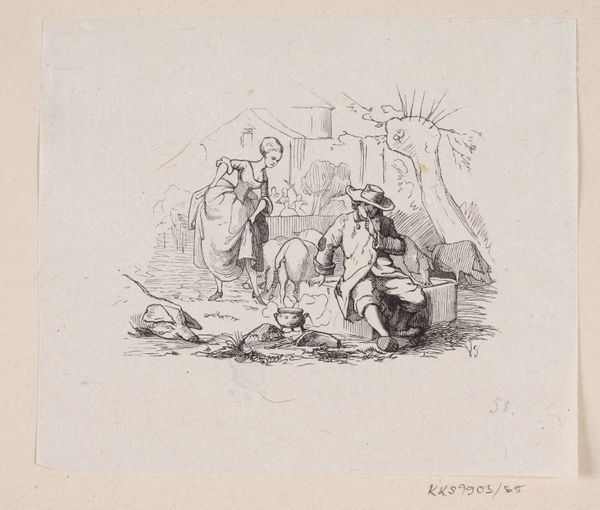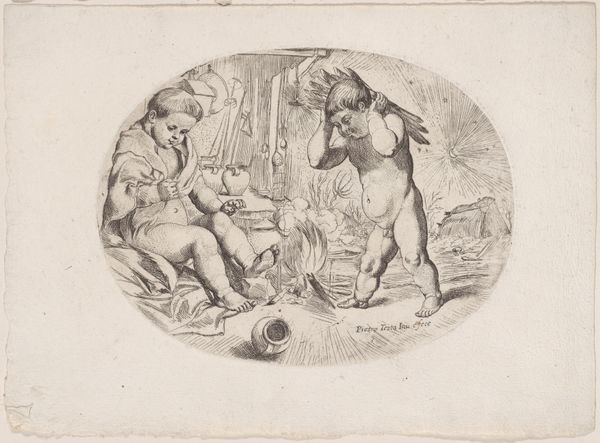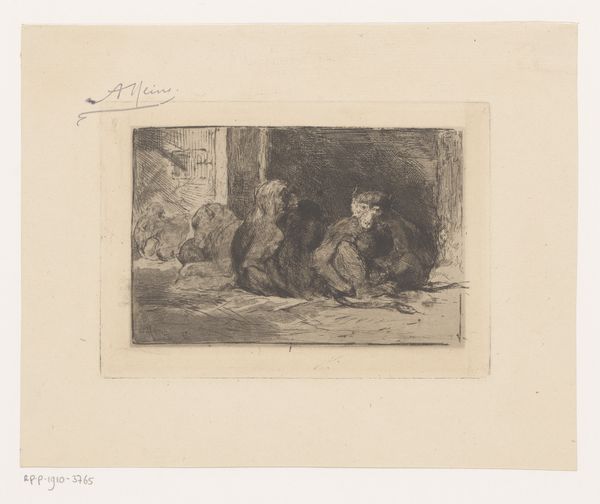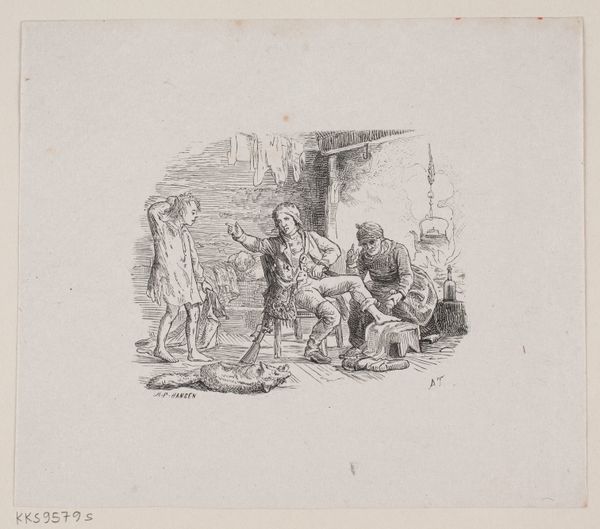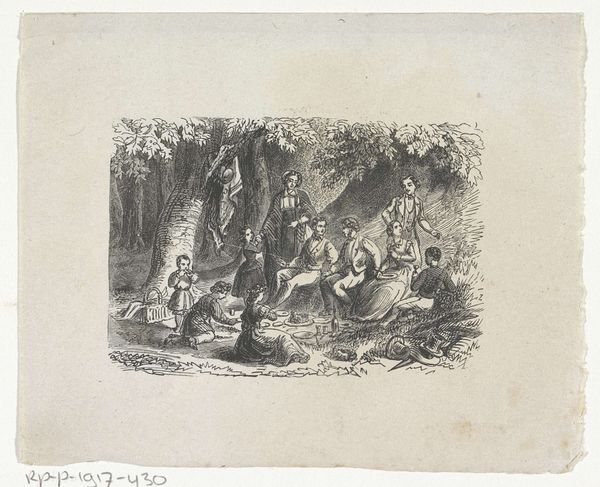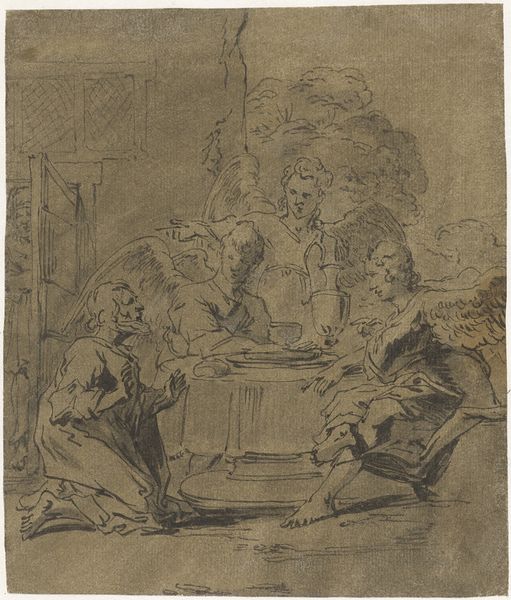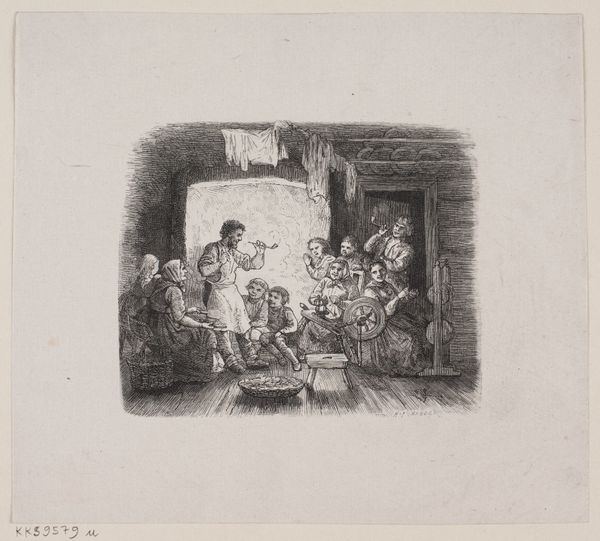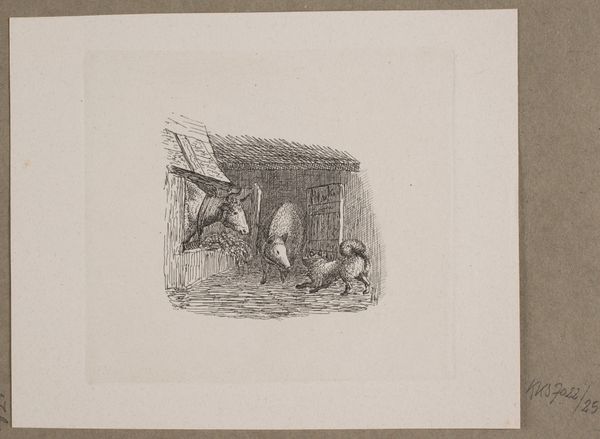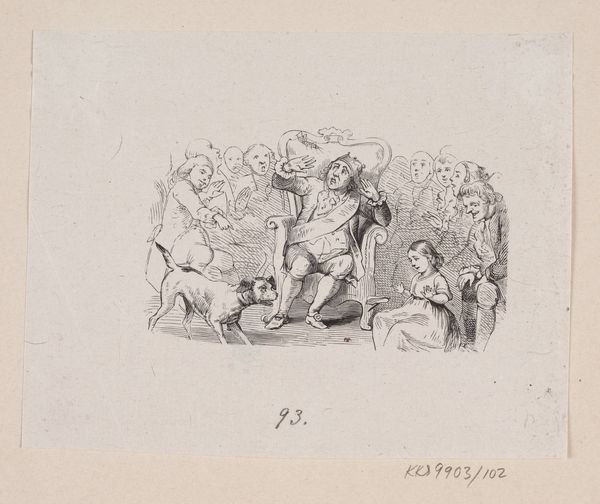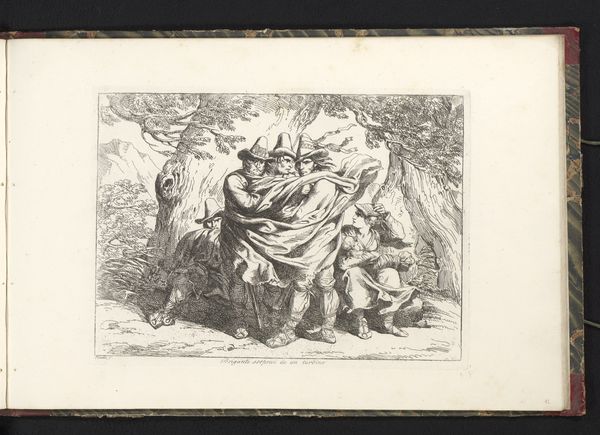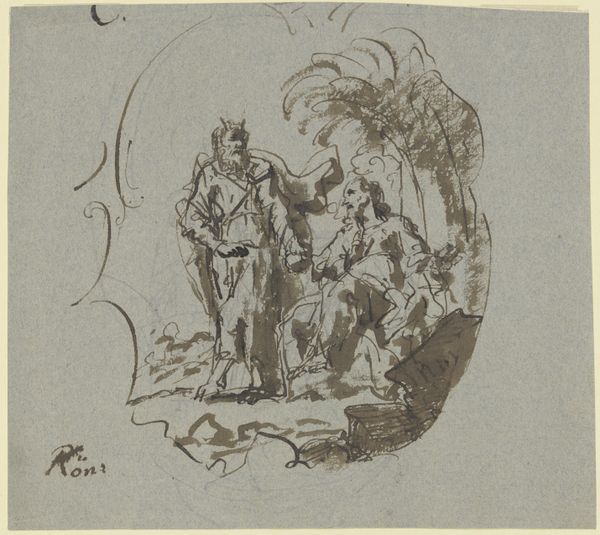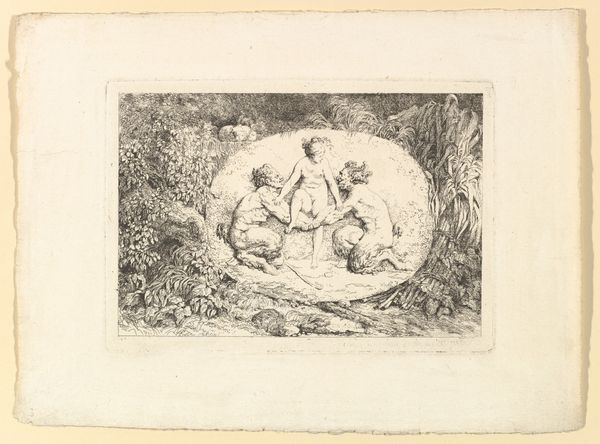
drawing, paper, ink
#
drawing
#
baroque
#
figuration
#
paper
#
personal sketchbook
#
ink
#
15_18th-century
#
history-painting
Copyright: Public Domain
Curator: Georg Anton Urlaub's "Josef und die Frau des Potiphar" presents a scene of charged drama using ink on paper. The Baroque styling immediately communicates a high level of emotion, rendered within the constraints of sepia tones. Editor: My initial response is one of tension. The stark contrasts of light and shadow create a sense of unease, and the figures' poses speak to conflict and potential violence. The composition feels deliberately unbalanced, adding to the unsettling mood. Curator: Indeed. Urlaub engages with a prevalent theme in art history – the story of Joseph and Potiphar's wife, drawing on its complex tapestry of power dynamics and moral conflicts. Here, the artist uses the recognizable visual shorthand of dramatic gestures, with Joseph recoiling from the advances of a reclining, sensuous Potiphar's wife. We can interpret the historical representation as embodying gendered power, where male agency confronts female desire in the setting of moral trial. Editor: I am struck by the canopy dominating the scene, and the position of the wife reclining languidly on the bed, suggesting both power and vulnerability. Its heavy presence, casting shadows on the figures, could also be symbolic, perhaps representing the societal constraints, domestic enclosure and repressed desires at play. Curator: It is important to remember the context within which Urlaub worked, however. Baroque art served not only aesthetic purposes but also conveyed distinct cultural, social, and religious viewpoints. Here, the narrative highlights the virtues of resistance against temptation while arguably still indulging in its visual spectacle. How does this paradox affect the legacy of its interpretation? Editor: I agree. Urlaub employs potent iconography to convey his themes: we must consider the serpent-like curves of the draped fabric, reminiscent of the story of the Fall. It underscores the inherent deception and moral danger of seduction that the wife poses, while Joseph acts as the picture of morality and faith. Ultimately, its endurance lies in its capability to articulate universal and enduring motifs through carefully planned visual components. Curator: Reflecting upon the artist’s methods, Urlaub successfully merges spectacle and substance, which invites continual inquiry into our comprehension of human behaviour and artistic portrayal through ages. Editor: Yes, viewing through the lens of the artwork’s lasting influence, we still can appreciate its blend of narrative drama, symbolism, and powerful composition.
Comments
No comments
Be the first to comment and join the conversation on the ultimate creative platform.

